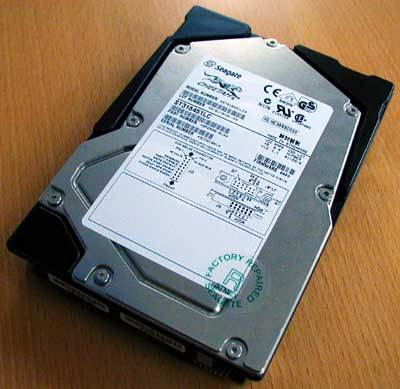We Have a Winner - Seagate's 'Cheetah X15'
Get Ready For Seagate's High-performance Drive
It took a while before Seagate provided us with the Cheetah X15, one of their fanciest hard drives. The Cheetah series of drives has been groundbreaking in its own right - several years ago, the first model in the series was also the first to break the 10,000 rpm barrier. Increasing the rotation speed is one of the most popular ways of improving hard drive performance. Today, every SCSI hard drive manufacturer ships at least one family of drives that runs at 10,000 rpm, which has become the current standard for high performance SCSI drives. In the IDE sector, 7200 rpm is the current standard, but perhaps it also won't be long until we see the first 10,000 rpm IDE drives.
15,000 Rpm Drives: A Balancing Act In Design
There are basically two ways to increase the performance of hard drives: increase the rotation speed or increase the data density. Increasing the rotation speed definitely enables better sequential performance, but only if you adjust the read/write mechanism accordingly. Increasing data density is also a popular method - recently, Western Digital announced the first drive with 27 GB per platter, which is in strong contrast to the 15 or 20 GB per platter for most IDE drives and a greater contrast to the even lower densities for most fast-spinning SCSI drives. However, the catch is that high density doesn't allow top rotation speeds, and vice versa. So essentially, designing a fast hard drive involves creating the most ideal balance between rotation speed and density.
Get Tom's Hardware's best news and in-depth reviews, straight to your inbox.
Current page: Get Ready For Seagate's High-performance Drive
Next Page Data Transfer: Not Faster Than 10k Drives?
Patrick Schmid was the editor-in-chief for Tom's Hardware from 2005 to 2006. He wrote numerous articles on a wide range of hardware topics, including storage, CPUs, and system builds.
